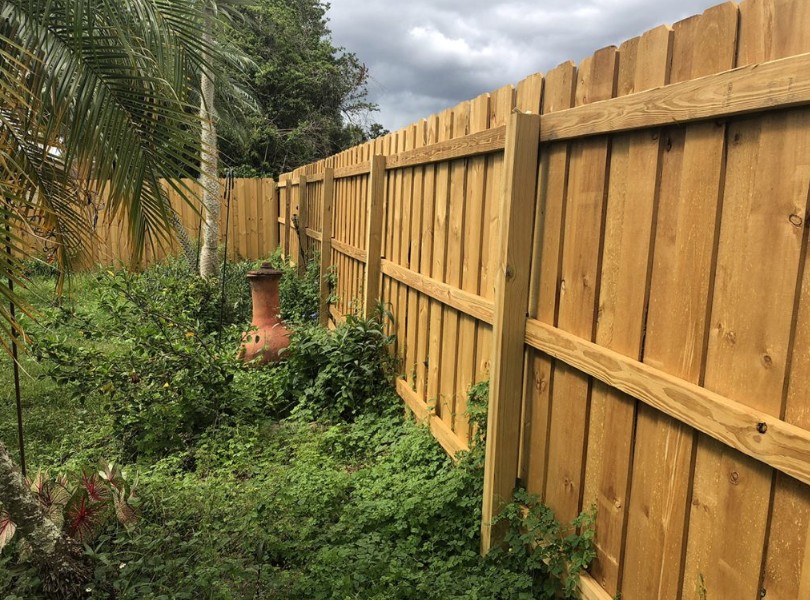
The Ultimate Guide to Wood Fence: Benefits, Types, and Maintenance
A wood fence is a timeless and versatile choice for homeowners looking to enhance privacy, security, and curb appeal. Whether you’re aiming to define property boundaries, keep pets safe, or add a rustic charm to your yard, a wood fence offers both functionality and aesthetic value. In this comprehensive guide, we’ll explore the benefits, popular types, installation tips, and maintenance practices for wood fences.
Why Choose a Wood Fence?
- Natural Aesthetic Appeal
A wood fence blends seamlessly with outdoor landscapes, offering a warm and organic look. Unlike metal or vinyl, wood provides a classic, natural appearance that complements gardens, patios, and traditional home designs.
- Customizable Design Options
Wood is highly versatile, allowing for various styles, heights, and finishes. Whether you prefer a wood fence with a horizontal slat design, a classic picket fence, or a sturdy privacy fence, customization is easy.
- Durability and Strength
When properly treated and maintained, a wood fence can last for decades. Pressure-treated wood, cedar, and redwood are naturally resistant to rot, insects, and harsh weather conditions.
- Cost-Effective Solution
Compared to wrought iron or composite fencing, a wood fence is more budget-friendly while still delivering excellent durability and visual appeal.
Popular Types of Wood Fences
- Privacy Fence
A tall, solid wood fence (usually 6-8 feet high) with closely spaced boards prevents outsiders from seeing into your yard, making it ideal for backyards and pool areas.
- Picket Fence
A classic white wood fence with evenly spaced vertical boards, often used for front yards to enhance curb appeal while maintaining an open feel.
- Split Rail Fence
A rustic wood fence made of rough-hewn timber rails, commonly used for large properties, farms, and rural settings.
- Lattice Fence
A decorative wood fence with crisscrossed panels, perfect for adding a touch of elegance while allowing light and air to pass through.
- Shadowbox Fence
A semi-private wood fence where alternating boards are installed on both sides of the rails, offering partial visibility and wind resistance.
How to Install a Wood Fence
Step 1: Plan and Measure
- Check local zoning laws for height and boundary restrictions.
- Mark the fence line with stakes and string.
- Measure the total length to estimate materials needed.
Step 2: Gather Materials
- Pressure-treated wood fence posts, rails, and pickets
- Concrete or gravel for post stability
- Nails, screws, and a post-hole digger
Step 3: Set the Posts
- Dig holes (about 1/3 of the post’s height) and place posts.
- Fill with concrete or gravel for stability.
- Allow concrete to cure for 24-48 hours.
Step 4: Attach Rails and Pickets
- Install horizontal rails between posts.
- Nail or screw vertical pickets to the rails, ensuring even spacing.
Step 5: Apply a Protective Finish
- Stain, paint, or seal the wood fenceto enhance longevity.
Maintaining Your Wood Fence
- Regular Cleaning
- Use a mild detergent and water to remove dirt and mildew.
- A power washer (on low setting) can help deep-clean without damaging wood.
- Staining and Sealing
- Apply a weather-resistant stain or sealant every 2-3 years to prevent rot and UV damage.
- Inspect for Damage
- Check for loose boards, insect infestations, or rot.
- Replace damaged sections promptly to maintain structural integrity.
- Trim Vegetation
- Keep plants and vines away from the wood fenceto prevent moisture retention and decay.
Conclusion
A wood fence is an excellent investment for homeowners seeking beauty, privacy, and durability. With various styles to choose from and proper maintenance, your wood fence can last for years while enhancing your property’s value. Whether you prefer a classic picket design or a sturdy privacy fence, wood remains a top choice for fencing solutions.
